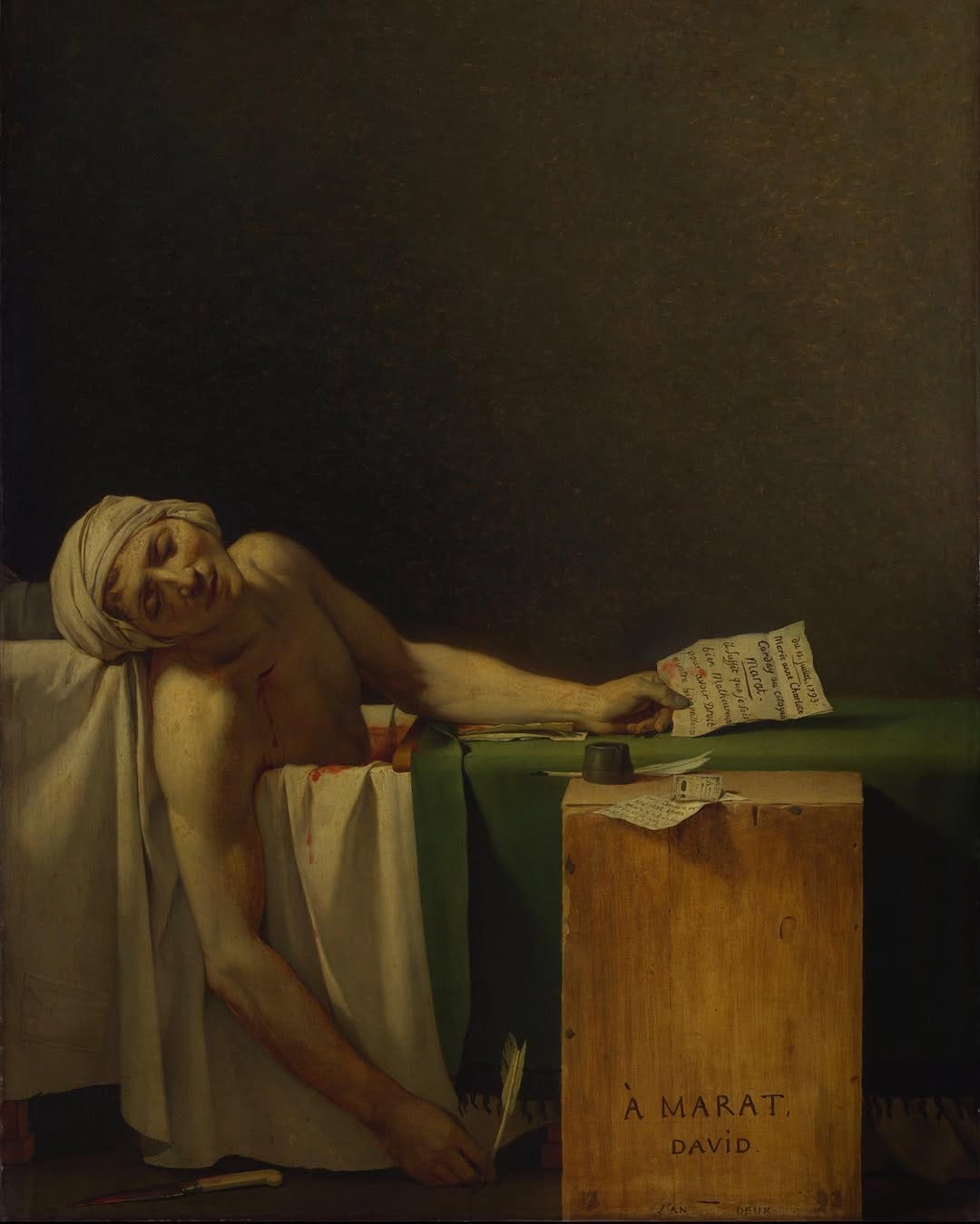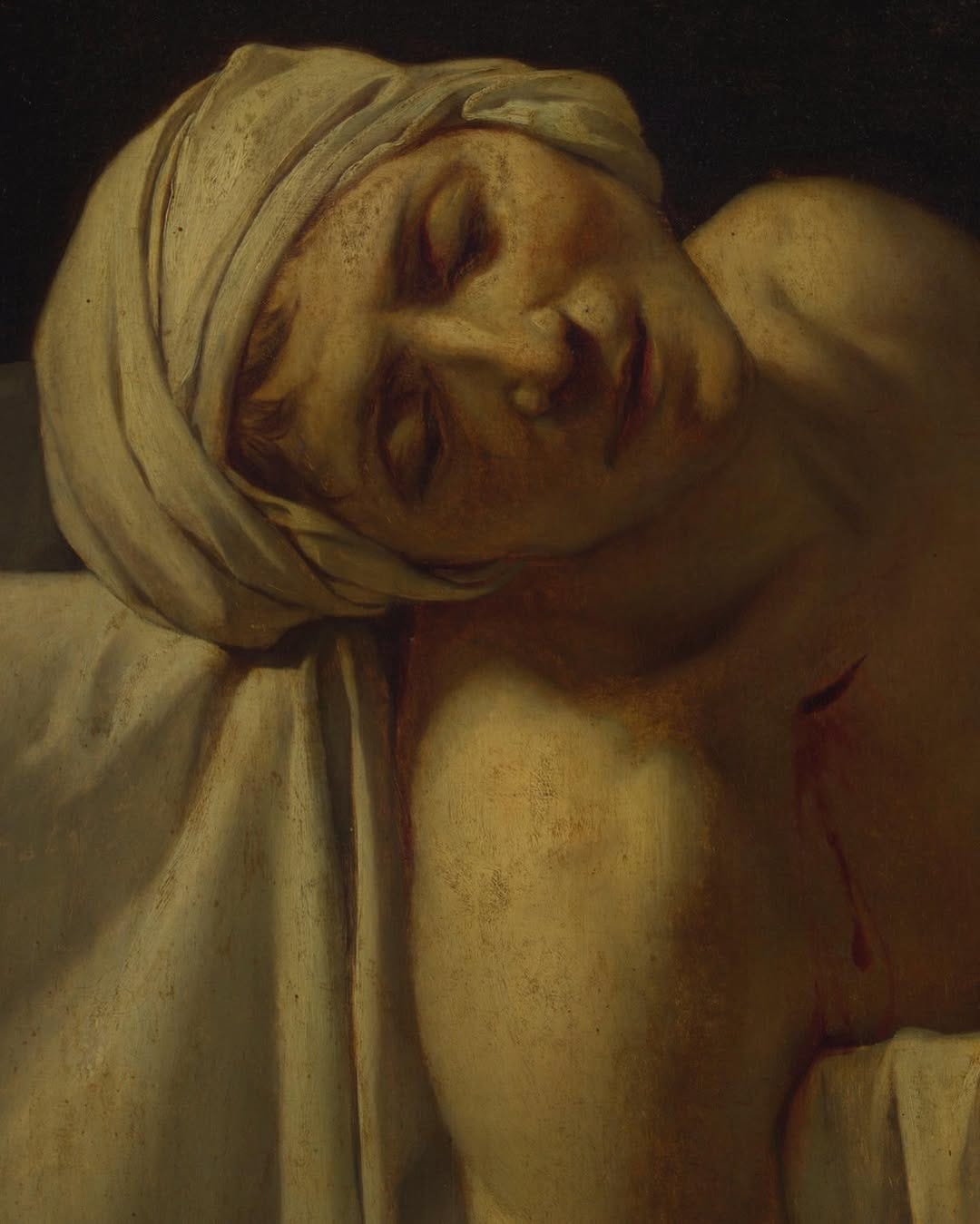JACQUES-LOUIS DAVID - THE DEATH OF MARAT, 1793
The painting depicts the aftermath of the assassination of Jean-Paul Marat, a radical French revolutionary leader and David's close friend. The scene shows Marat lying dead in his bathtub, where he spent much time due to a debilitating skin condition. He is slumped with a quill still in his hand, symbolizing his dedication to the revolution even in his final moments. The bloodied knife used by his assassin, Charlotte Corday, a Girondin sympathizer, lies discarded on the floor, emphasizing Marat's martyrdom and triumph over death. The letter, from Corday, falsely appeals to Marat for help, highlighting her deception. David omits Corday’s presence entirely, focusing instead on elevating Marat as a revolutionary icon who gave his life for the greater good.
Jean-Paul Marat, a radical journalist and Jacobin leader, was assassinated on July 13, 1793, by Charlotte Corday, a 24-year-old Girondin sympathizer from Caen, during the French Revolution’s intense factional conflicts. Marat’s newspaper, L’Ami du peuple, fiercely advocated for the lower classes and called for violence against aristocrats and moderates, particularly targeting the Girondins for their perceived leniency toward the monarchy. Viewing Marat as a tyrant fueling the Reign of Terror, Corday traveled to Paris, gained access to him on July 13 by claiming to have information about Girondin fugitives, and stabbed him in the chest while he worked in his bath, killing him instantly. Corday was executed by guillotine four days later on July 17, but her attempt to weaken the Jacobins backfired, as Marat’s death galvanized them, transforming him into a revolutionary martyr.
In the painting the distinctive, geometric arrangement—centered on Marat’s slumped body in the bathtub, with minimal background elements—eliminates distractions and directs the viewer’s attention to the tragedy of Marat’s death. The simplicity amplifies the solemnity, making the scene feel intimate and universal, like a secular pietà, bringing to mind empathy and reverence for Marat as a revolutionary martyr.




